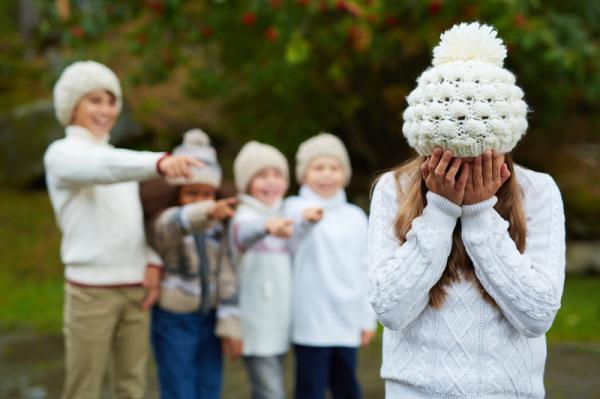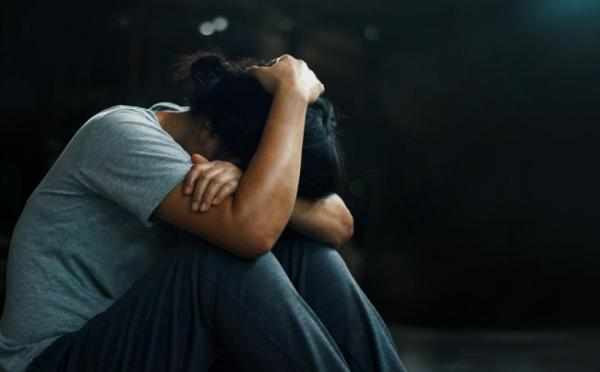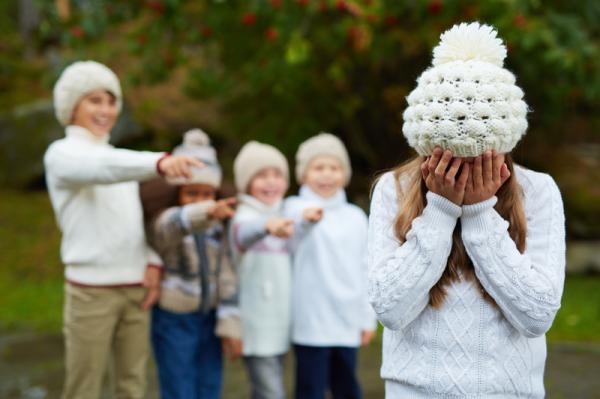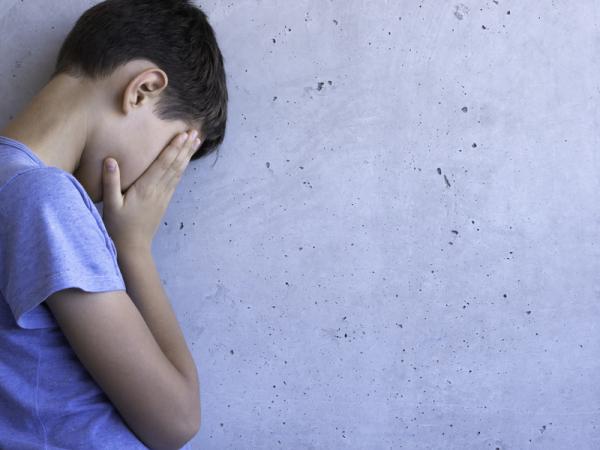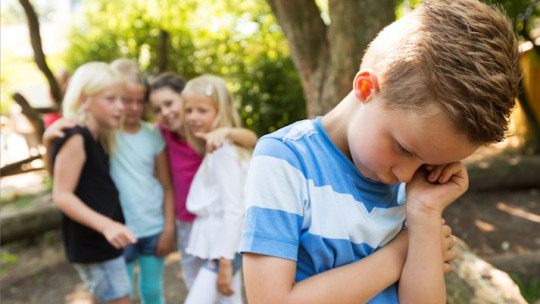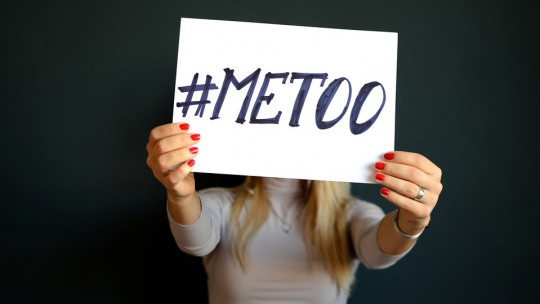
Bullying or bullying is a social phenomenon that is unfortunately common in the school environment and is characterized by a direct intention of physical or psychological abuse by one or more people towards a classmate, inside and/or outside the educational center. .
It is one of the most studied social dynamics of abuse in the field of child and social psychology, which is why psychology and education professionals have developed various intervention strategies to prevent and eradicate acts of bullying in the classroom. .
However, Part of the solution to combat bullying is to debunk widespread myths about bullying Let’s see which are some of the most harmful.
The most common myths about bullying
Although it is a common problem in the lives of many boys and girls, bullying continues to be an unknown issue for many people, and about which many people continue to maintain harmful ideas or myths that do not correspond to the reality of the problem.
Here you will find the main myths about bullying that still exist in today’s society.
1. They are children’s things
Considering that an act as serious as bullying is normal at that age and even that it is a game is an irresponsible way of downplaying a social dynamic that can end up generating mental health problems in the victim.
Saying that these are children’s things only removes responsibility from the abusers and make the victim believe that their anguish and suffering are really not that big of a deal.
2. That experience makes you stronger
To say that bullying strengthens the character or makes those who suffer it stronger is not knowing the great consequences that bullying can have on the victims, both in childhood and as adults.
The majority of people who have gone through bullying situations usually develop cases of anxiety, depression, trauma, stress, obsessive-compulsive disorder and a long list of possible psychological disorders.
3. It’s part of growing up
Again, normalizing bullying to the point of considering that it is a normal stage of school life or natural growth, the only thing it does is diminish the importance and seriousness of the problem.
Instead of normalizing it, what adults, both teachers and parents, should do is identify this type of bullying dynamic as soon as possible and solve them as soon as possible, in a planned manner and through effective protocols.
Likewise, the responsibility of classmates is to report whenever they see a case of bullying against any student.
4. It is bullying when there is physical aggression
As indicated at the beginning of the article, there are many forms of bullying: the most visible are physical attacks but there are also forms of psychological bullying, which are more difficult to identify but equally harmful.
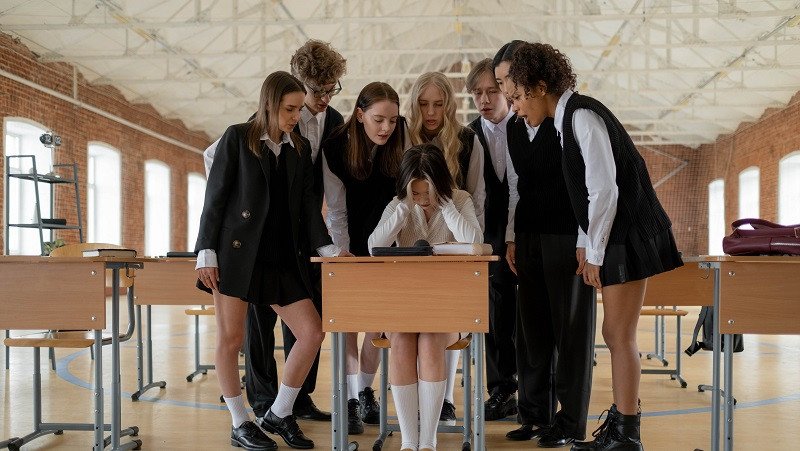
Psychologists believe that Some forms of psychological bullying can be worse than certain physical attacks since they cause damage to the personality or self-esteem of the victim and can leave a lasting mark on the mental health of the affected person.
5. Words don’t hurt
Thus, we can reach the conclusion that both words, insults and psychological violence are forms of psychological aggression that can cause more damage to the victim than punches or kicks.
Insults systematically uttered against a person can permanently erode both the person’s mental health, personality and level of self-esteem.
6. The victims are weak people
Victims of bullying almost never follow the same pattern and tend to be people from very diverse social and cultural backgrounds, sex and physical constitution.
Contrary to widespread opinion, victims are not always weak, short or shy children, and they do not always come from disadvantaged or unstructured backgrounds.
7. Cyberbullying is not that serious
Cyberbullying is the type of harassment that occurs in the digital sphere and in which the perpetrators harass a victim from their social networks and using all types of images of the victim, memes or hurtful messages.
Although some people consider that it may be a milder form of bullying, the truth is that it can affect the victim’s mental health to the same or greater extent than classic bullying.
8. Any argument is bullying
Some educators may consider that any sign of disagreement or angry discussion between peers can be considered bullying.
Bullying is carried out with the intention of humiliating and hurting the other person and usually pits several people against one; while a normal discussion is motivated by a divergence between opinions.
9. Girls don’t bully
There is a poorly founded option that states that girls do not bully and that bullying is exclusive to boys.
The reality is that bullying is carried out by both girls and boys and that when it comes to harassing, neither the gender nor the personal circumstances of the victim matter.
10. It’s a fashion
Because more and more cases of bullying are known, some people may consider that there is more bullying today than decades ago.
This change in social and school dynamics is simply explained by the fact that bullying was not previously reported nor was there as much social awareness as there is currently.
11. Does not cause long-term damage
Bullying can cause many consequences in the people who suffer it, both physically and intellectually and psychologically in cases of more serious bullying.
Systematic insults, threats, humiliation and permanent harassment can cause serious mental health problems in victims, which is why you should not trivialize the consequences.
12. There are people who deserve it
No matter how bad we may feel about someone or how much we think someone deserves it, no one deserves to go through a situation as serious as bullying. Among other things, because these situations aggravate the relational problems that already existed before.
The basis of coexistence is respect between all the people who coexist in a school or educational center without going to the extreme of harassing anyone or wishing bullying on anyone.
13. Bullying is easy to recognize
Although physical bullying is easily recognizable, psychological bullying or harassment is more subtle and difficult to identify, a task for which both teachers and parents must be responsible.
Even if the bullying is sibylline and mild, professional educators must put into practice the best techniques and strategies to detect when a case of bullying is occurring.
14. Ignoring it will make it go away
Although many people may believe this, harassers do not follow rational logic and no matter how much they are ignored, they will not always stop their efforts to harm the victim; Sometimes the lack of negative repercussions encourages them more and they even compete with each other to see who can go the furthest
That is why to end the dynamics of bullying it is necessary to intervene as soon as possible on the part of teachers, classmates and parents.
15. Violence is responded to with violence
Although on many occasions there is a temptation to teach the victim that they must defend themselves with violence and pay their harasser or harassers in the same coin, the truth is that it cannot always be resolved that way.
In many cases, violence only triggers more violence and can cause the victim to also end up getting into trouble and being punished for violent acts.
16. Children who complain are weak
Associating children who report their case with weakness or immaturity is a big mistake that what it does is re-victimize the victim
On the contrary, it is important to recognize the courage of the children who report and assure them that they are doing their best to overcome the problem.
17. Victims always tell an adult
Unfortunately, victims do not always seek help from an adult and Many times they keep the bullying situation to themselves, due to self-esteem problems and the shame they suffer
The most advisable thing for anyone who finds themselves in this situation is to report the harassment they are receiving to teachers and parents as soon as possible.
18. Bullying is impossible to stop
Bullying can be easily stopped as long as standardized protocols based on scientific evidence are applied.
By putting the case in the hands of professionals and pulling in the same direction together with parents, teachers and students, bullying can be overcome and the harassment can stop.
19. Cyberbullying starts in high school
Cyberbullying usually appears at 14 or 15 years of age or older, however it can also occur in younger children and adolescents such as 13 or even 11.
This type of bullying only requires a user connected to the Internet or certain social networks, since it can affect any boy or girl.
20. Parents and teachers don’t know anything
Teachers are often aware of the situation of abuse but sometimes end up doing nothing about it.
On the contrary, the role of parents is also to identify this type of problem in their children, which they often do successfully.


